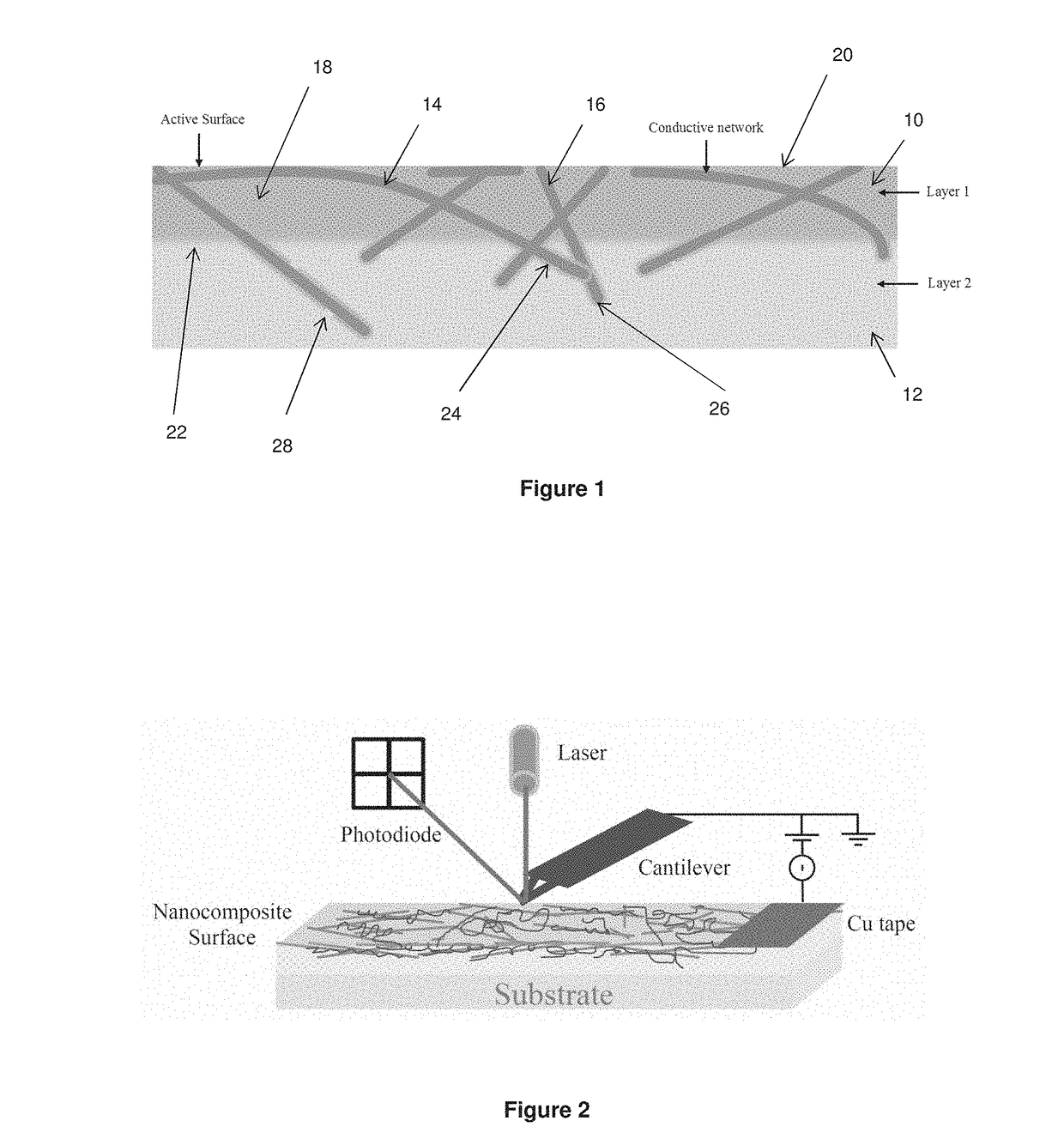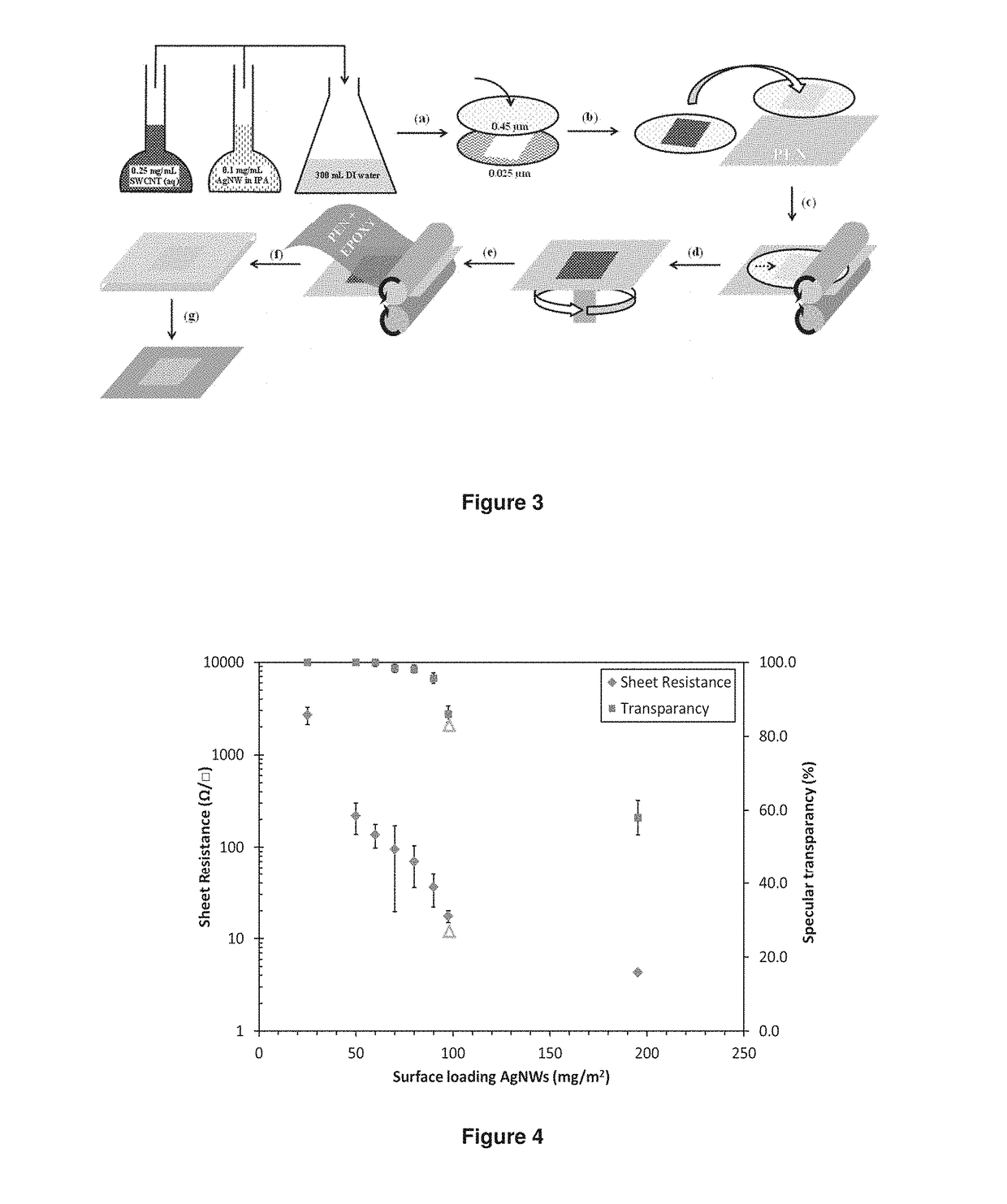Transparent electrode materials and methods for forming same
a technology of transparent electrodes and electrode materials, which is applied in the direction of conductive materials, carbon-silicon compound conductors, metal/alloy conductors, etc., can solve the problems of poor performance, inability to extract current from the active surface of the electrode, and inacceptable sheet resistance, so as to increase the transfer effect, lower and the resistance of the sheet is higher.
- Summary
- Abstract
- Description
- Claims
- Application Information
AI Technical Summary
Benefits of technology
Problems solved by technology
Method used
Image
Examples
Embodiment Construction
[0083]The following description outlines experimental work for the preparation of exemplary transparent electrode materials in accordance with the present invention. Specifically, exemplary transparent electrode materials of these embodiments are as illustrated in FIG. 1 and include a single conductive layer 10 and a base layer 12 that is non-conductive. The conductive layer 10 is a conductive network formed by metallic nanowires 14 and carbon nanotubes 16, which in these embodiments are the preferred silver nanowires (AgNW) and single-walled carbon nanotubes (SWCNT) encapsulated in a preferred conductive material 18.
[0084]The conductive layer has a smooth active surface 20 and a second surface 22, noting that the second surface 22 of the conductive layer 10 has encapsulated nanowires 24 and / or nanotubes 26 projecting therefrom. In this respect, the projecting nanowires and / or nanotubes are embedded in the base layer 12, and are shown to be almost completely encapsulated by the cond...
PUM
| Property | Measurement | Unit |
|---|---|---|
| transparency | aaaaa | aaaaa |
| diameter | aaaaa | aaaaa |
| diameter | aaaaa | aaaaa |
Abstract
Description
Claims
Application Information
 Login to View More
Login to View More - R&D
- Intellectual Property
- Life Sciences
- Materials
- Tech Scout
- Unparalleled Data Quality
- Higher Quality Content
- 60% Fewer Hallucinations
Browse by: Latest US Patents, China's latest patents, Technical Efficacy Thesaurus, Application Domain, Technology Topic, Popular Technical Reports.
© 2025 PatSnap. All rights reserved.Legal|Privacy policy|Modern Slavery Act Transparency Statement|Sitemap|About US| Contact US: help@patsnap.com



